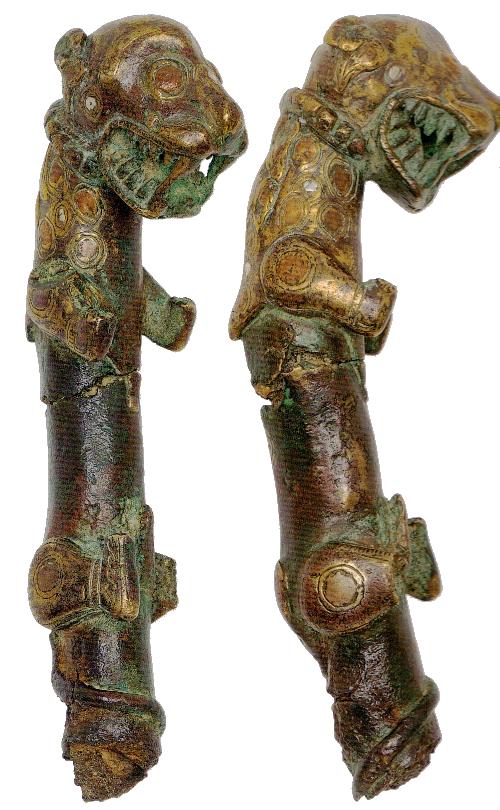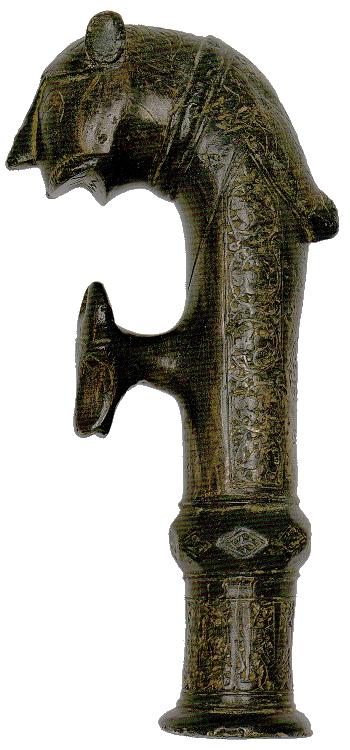Ghaznavid Maces
An extract fromThe Arts of the Muslim Knight
The Furusiyya Art Foundation Collection
by Bashir Mohamed, 2008
 |
225 Mace head (‛Amūd) Probably Afghanistan, Ghaznavid period, ninth-tenth century Iron, gilded copper alloy, copper, silver L. 20.1 cm Inv. R-139 This mace is cast in the round in copper alloy over an iron core in the form of a leopard or cheetah whose spots are highlighted with inlaid silver and copper; it bears a full set of ferocious fangs. The piece would have had a long shaft, also of iron, which is now broken away. It is said to have been found in modern-day Afghanistan. This is an example of the kind of mace which early writers called an ‛Amūd (see introduction). One of the primary virtues of early war maces seems to have been their extreme weight which only trained warriors, heroes or, of course, sultans, were capable of wielding. The tradition of highlighting feline markings with different coloured metals, a kind of damascening, is pre-Islamic and is generally considered typical of Parthian workmanship.1 Examples from earlier periods are generally naturalistically rendered, whereas the feline on this mace head, with its rather stiff mechanical legs, is a reflection of a late tradition of steppe art. The leopard also wears a collar, like the small hunting leopards known as cheetahs depicted riding on the backs of horses on early Nīshāpūr ceramics,2 a reminder that maces, as with many other types of weapon, served equally well in the hunt as in war. 1 Adams et al. 2004. pp. 82-83, no.85 assembles the Bibliography. 2 Wilkinson 1973. pp. 20-22 and 45. | |
 |
 229 Mace head Iran or Afghanistan, Ghaznavid period, eleventh-twelfth century Copper alloy H. 19.9 cm Inv. R-713 Inscribed This mace head of copper alloy is cast with a lion head at the top and an ox head springing from the shaft immediately below the lion's mouth. It is engraved with panels containing arabesque scrolls, a roundel enclosing a bird and, around the base, with an Arabic inscription in a cursive script. This piece would seem to be a later version of an ‛amūd like the example in cat. no. 225, cast with a socket like the type of mace ancient authors described as a dabbūs. It takes its form from the long sheath-like mace heads with domed tops from the Saljūq period, but has been bent over at the top and given a bull-head hook in the centre. Its symbolism was also presumably related to the early Ṣāmānid pieces as well. A closely similar mace head is in the Keir Collection.1 1Fehérvári 1976, p.90, P1. 39, no. 115, formerly in the Weill Collection, misidentified as a chair terminal. |
See also Seljuk Maces
Maces by David Nicolle, an extract from The military technology of classical Islam
11th Century Illustrations of Costume & Soldiers
